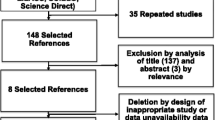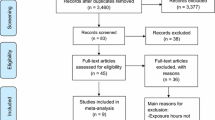Abstract
Purpose
The 11+ injury prevention program has been shown to decrease injury rate. However, few studies have investigated compliance and if it is correlated to time loss. The purpose of this study was to (1) analyze how differences in compliance may impact injury rate and (2) if compliance may impact time loss due to injury.
Methods
This study was a Level 1 prospective cluster randomized controlled trial conducted in NCAA men’s football (soccer) teams that examined the efficacy of the 11+ injury prevention program. The two outcome variables examined were number of injuries and number of days missed from competition. Twenty-seven teams (n = 675 players) used the 11+ program. Compliance, injuries and time loss were recorded. There were three compliance categories, low (LC, 1–19 doses/season), moderate (MC, 20–39 doses/season), and high (HC, > 40 doses/season).
Results
There was a significant difference among the groups for injuries, p = 0.04, pη2 = 0.23. The LC group [mean (M) = 13.25, 95% confidence interval (CI) 9.82–16.68, injury rate (IR) = 10.35 ± 2.21] had a significantly higher injury rate than the HC group (M = 8.33, 95%CI 6.05–10.62, IR = 10.35 ± 2.21), p = 0.02. The MC group (M = 11.21, 95%CI 9.38–13.05, IR = 8.55 ± 2.46) was not significantly different than the LC group, p = 0.29, but was significantly greater than the HC group, p = 0.05. When examined as a continuous variable, compliance was significantly negatively related to injury rate (p = 0.004). It was also significantly negatively related to number of days missed (p = 0.012).
Conclusions
When compliance was high, there was a significant reduction in injury and time loss. This evidence reinforces the importance of consistent injury prevention program utilization. Clinically, these findings have important implications when discussing the importance of consistent utilization of an injury prevention protocol in sport.
Level of evidence
Level 1—Randomized controlled trial (RCT).



Similar content being viewed by others
References
Arnason A, Engebretsen L, Bahr R (2005) No effect of a video-based awareness program on the rate of soccer injuries. Am J Sports Med 33:77–84
Bahr R, Thorborg K, Ekstrand J (2015) Evidence-based hamstring injury prevention is not adopted by the majority of Champions League or Norwegian Premier League football teams: the Nordic Hamstring survey. Br J Sports Med 49:1466–1471
Barengo NC, Meneses-Echavez JF, Ramirez-Velez R, Cohen DD, Tovar G, Bautista JE (2014) The impact of the FIFA 11+ training program on injury prevention in football players: a systematic review. Int J Environ Res Public Health 11:11986–12000
Bizzini M, Junge A, Dvorak J (2013) Implementation of the FIFA 11+ football warm up program: how to approach and convince the Football associations to invest in prevention. Br J Sports Med 47:803–806
Blakely C, Mayer J, Gottschalk R, Schmitt N, Davidson W, Riotman D et al (1987) The fidelity-adaptation debate: implications for the implementation of public sector social programs. Am J Com Psychol 15(3):253–268. https://doi.org/10.1007/BF00922697
Caraffa A, Cerulli G, Projetti M, Aisa G, Rizzo A (1996) Prevention of anterior cruciate ligament injuries in soccer. A prospective controlled study of proprioceptive training. Knee Surg Sports Traumatol Arthrosc 4(1):19–21
Carroll C, Patterson M, Wood S, Booth A, Rick J, Balain S (2007) A conceptual framework for implementation fidelity. Implement Sci 2:40
Ekstrand J, Gillquist J, Lysholm J, Moller M, Oberg B (1983) Considerably decreased amount of soccer injuries after introduction of a preventive program. Lakartidningen 80:1803–1804 (1809)
Fortington LV, Donaldson A, Lathlean T, Young WB, Gabbe BJ, Lloyd D et al (2015) When ‘just doing it’ is not enough: assessing the fidelity of player performance of an injury prevention exercise program. J Sci Med Sport 18:272–277
Fuller C, Ekstrand J, Junge A et al (2006) Consensus statement on injury definitions and data collection procedures in studies of football (soccer) injuries. Br J Sports Med 40:193–201
Gilchrist J, Mandelbaum BR, Melancon H, Ryan GW, Silvers HJ, Griffin LY et al (2008) A randomized controlled trial to prevent noncontact anterior cruciate ligament injury in female collegiate soccer players. Am J Sports Med 36:1476–1483
Grooms DR, Palmer T, Onate JA, Myer GD, Grindstaff T (2013) Soccer-specific warm-up and lower extremity injury rates in collegiate male soccer players. J Athl Train 48:782–789
Hagglund M, Atroshi I, Wagner P, Walden M (2013) Superior compliance with a neuromuscular training programme is associated with fewer ACL injuries and fewer acute knee injuries in female adolescent football players: secondary analysis of an RCT. Br J Sports Med 47:974–979
Hagglund M, Walden M, Atroshi I (2009) Preventing knee injuries in adolescent female football players—design of a cluster randomized controlled trial [NCT00894595]. BMC Musculoskelet Disord 10:75
Heidt RS Jr, Carlonas RL, Traub JA, Tekulve FX (2000) Avoidance of soccer injuries with preseason conditioning. Am J Sports Med 28:659–662
Hewett TELT., Riccobene JV, Noyes FR (1999) The effect of neuromuscular training on the incidence of knee injury in female athletes. A prospective study. Am J Sports Med 27:699–706
Mandelbaum BR, Silvers HJ, Watanabe DS, Knarr JF, Thomas SD, Griffin LY et al (2005) Effectiveness of a neuromuscular and proprioceptive training program in preventing anterior cruciate ligament injuries in female athletes: 2-year follow-up. Am J Sports Med 33:1003–1010
McKay CD, Verhagen E (2016) ‘Compliance’ versus ‘adherence’ in sport injury prevention: why definition matters. Br J Sports Med 50:382–383
Myklebust G, Engebretsen L, Braekken IH, Skjolberg A, Olsen OE, Bahr R (2007) Prevention of noncontact anterior cruciate ligament injuries in elite and adolescent female team handball athletes. Instr Course Lect 56:407–418
Nilsen P (2004) What makes community based injury prevention work? In search of evidence of effectiveness. Injury Prev 10:268–274
O’Brien J, Finch CF (2017) Injury prevention exercise programs for professional soccer: understanding the perceptions of the end-users. Clin J Sport Med 27:1–9
Owoeye OB, Akinbo SR, Tella BA, Olawale OA (2014) Efficacy of the FIFA 11+ warm-up programme in male youth football: a cluster randomised controlled trial. J Sports Sci Med 13:321–328
Pfeiffer RP, Shea KG, Roberts D, Grandstrand S, Bond L (2006) Lack of effect of a knee ligament injury prevention program on the incidence of noncontact anterior cruciate ligament injury. J Bone Joint Surg Am 88:1769–1774
Silvers-Granelli H, Mandelbaum B, Adeniji O, Insler S, Bizzini M, Pohlig R et al. (2015) Efficacy of the FIFA 11+ Injury Prevention Program in the Collegiate Male Soccer Player. Am J Sports Med. https://doi.org/10.1177/0363546515602009
Soligard T, Myklebust G, Steffen K, Holme I, Silvers H, Bizzini M et al (2008) Comprehensive warm-up programme to prevent injuries in young female footballers: cluster randomised controlled trial. BMJ 337:a2469
Soligard T, Nilstad A, Steffen K, Myklebust G, Holme I, Dvorak J et al (2010) Compliance with a comprehensive warm-up programme to prevent injuries in youth football. Br J Sports Med 44:787–793
Steffen K, Emery CA, Romiti M, Kang J, Bizzini M, Dvorak J et al (2013) High adherence to a neuromuscular injury prevention programme (FIFA 11+) improves functional balance and reduces injury risk in Canadian youth female football players: a cluster randomised trial. Br J Sports Med 47:794–802
Steffen K, Myklebust G, Olsen OE, Holme I, Bahr R (2008) Preventing injuries in female youth football—a cluster-randomized controlled trial. Scand J Med Sci Sports 18:605–614
Thorborg K, Krommes KK, Esteve E, Clausen MB, Bartels EM, Rathleff MS (2017) Effect of specific exercise-based football injury prevention programmes on the overall injury rate in football: a systematic review and meta-analysis of the FIFA 11 and 11+ programmes. Br J Sports Med 51:562–571
Tilson HH (2004) Adherence or Compliance? Changes in Terminology. Ann Pharmacother 38:161–162
Walden M, Atroshi I, Magnusson H, Wagner P, Hagglund M (2012) Prevention of acute knee injuries in adolescent female football players: cluster randomised controlled trial. BMJ 344:e3042
Funding
This study was funded by The Fédération Internationale de Football Association (FIFA).
Author information
Authors and Affiliations
Corresponding author
Ethics declarations
Conflict of interest
One of the authors (HJS-G) received a PhD Research Grant from Simbex, Inc (less than 10,000 USD); and is a research consultant to Major League Soccer’s M-MARC program (less than 10,000 USD) unrelated to this work. One of the authors (AA) received a Grant from the National Institutes of Arthritis and Musculoskeletal and Skin Diseases (R01-AR048212) (less than 10,000 USD) and the Foundation for Physical Therapy–Promotion of Doctoral Studies I Scholarship (less than 10,000 USD). One of the authors (BRM) received funding from FIFA to support the completion of this study (see below); and is a consultant to Athrex, RTI, Exactech, and DePuy Mitek. The institution (Santa Monica Orthopaedic Group) of one or more of the authors (HJS-G, BRM) has received funding from FIFA’s (Fédération Internationale de Football Association) F-MARC Program (2012) for the initial publication (10,000–100,000 USD).
Ethical approval
This study received Internal Review Board (IRB) and Human Ethics approval.
Informed consent
Informed consent was obtained through Quorum Internal Review Board (IRB # 26182/1) (Seattle, WA, USA).
Rights and permissions
About this article
Cite this article
Silvers-Granelli, H.J., Bizzini, M., Arundale, A. et al. Higher compliance to a neuromuscular injury prevention program improves overall injury rate in male football players. Knee Surg Sports Traumatol Arthrosc 26, 1975–1983 (2018). https://doi.org/10.1007/s00167-018-4895-5
Received:
Accepted:
Published:
Issue Date:
DOI: https://doi.org/10.1007/s00167-018-4895-5




